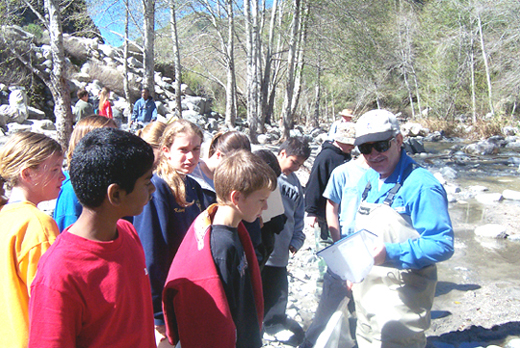
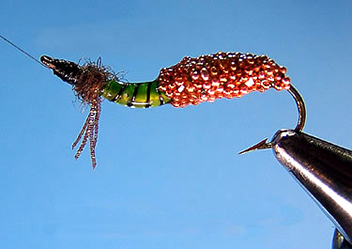 |
|
Copper Clad Caddis
|
|
This fly is tied in stages following five (5) major steps:
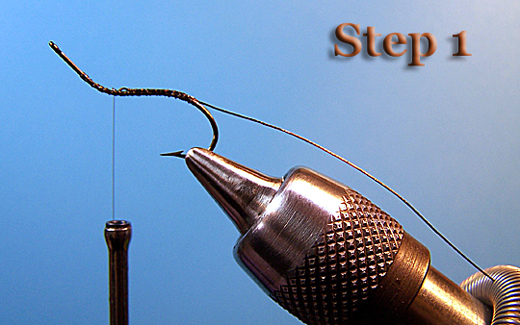 Step 1. Start the dark mono thread and advance it to just ahead of the hook bend. Tie-in the ribbing and position it just around the hook bend. Leave it trail behind the hook for now. Advance thread back forward, leaving a two-eye length gap.
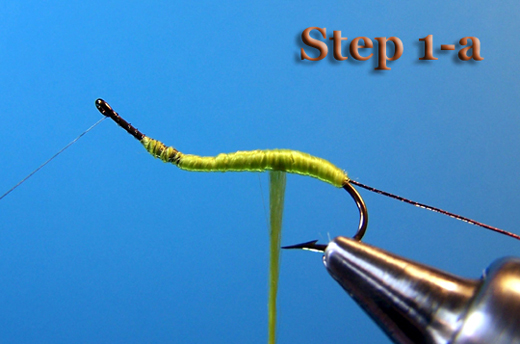 Step 1a. Starting well behind the eye, start the floss. Keep the floss yarn flat, over-lapping it slightly as you go. Build a smooth body along the hook shaft. Continue the floss a little ways around the hook bend. Keeping it flat, advance the floss forward to a point even with the hook point.
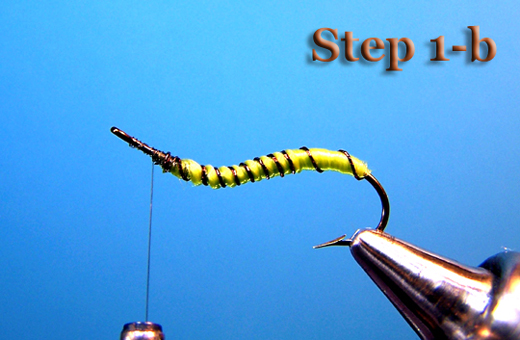 Step 1b. Now spin, and twist the floss into a tight yarn bundle "rib." Spiral this round floss bundle rib forward leaving a slight gap as you wind it along the previous course of floss. This technique provides spacing for the contrasting ribbing without adding unwanted bulk. When you reach the tie-in point, secure the floss with the dark mono and trim the floss tag. Advance the dark ribbing material forward between the floss ribs. Make a few binding wraps with the dark mono and secure these wraps using Zap-a-Gap, or head cement sparingly.
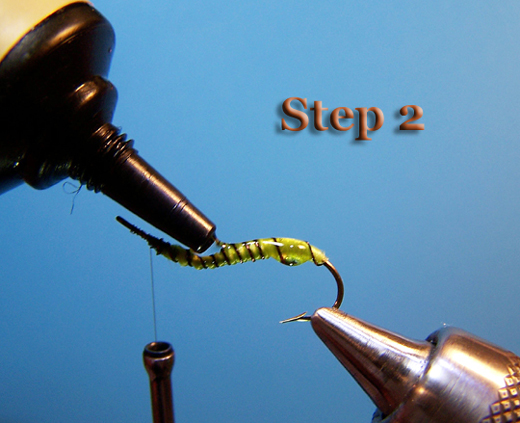 Step Two (2). Apply a thin coat of UV Knot Sense to the floss using a bodkin and allow time for this coating to thoroughly soak into the yarn body. Rotate fly in the vise to insure full and even coverage. This clear liquid coating will not gel until exposed to strong UV lighting-so take your time.
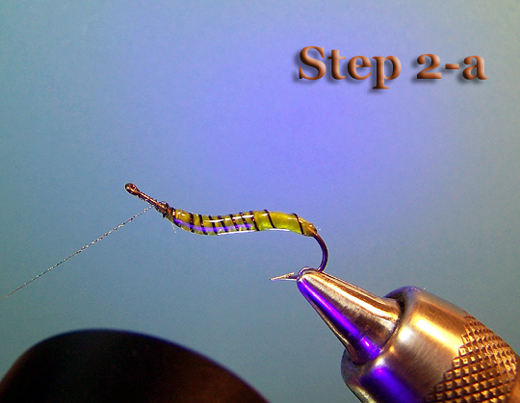 Step 2a. Wearing UV Filtering goggles, activate (harden) the UV Knot Sense liquid using a UV Cure Lamp at the bench. Cure time varies with the power of the available UV light source. Rotate the fly while exposing it to the UV light to insure complete irradiation of UV polymer. Typical cure time is less than one minute. Note: For example, a 6-Watt UV flash lamp cures Knot Sense in 5 seconds. Optional Cure process-Hold the uncured, coated fly with a pair of forceps and rotate the fly in direct sunlight outdoors until cured-Approximately 30-60 seconds.
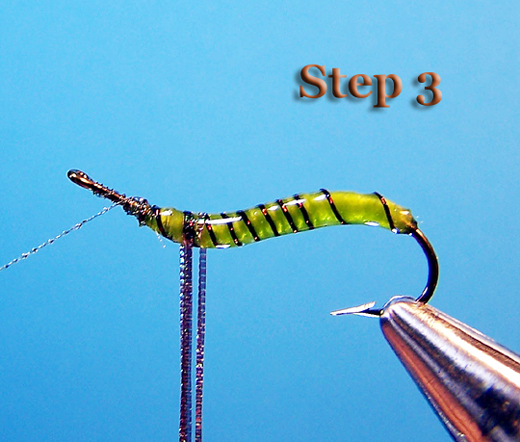 Step Three (3). Locate three (3) long strands of Gliss-N-Glo strands and loop over body to create 6 legs. Secure the legs on the underside of the body with the dark mono. Leave the legs untrimmed until later in the construction.
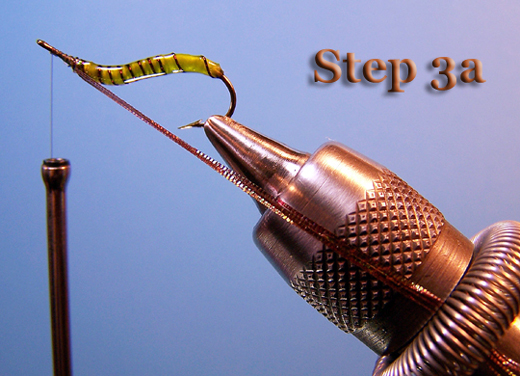 Step 3a. Pull backwards on the legs as you work to keep from trapping the legs in the dubbing.
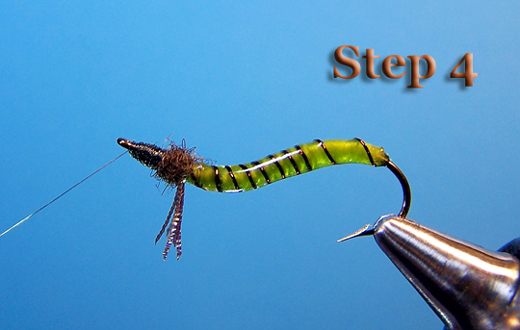 Step Four (4). Dub a tight thorax just ahead of the legs using the High Plains Natural Brown Underfur dubbed directly onto the dark mono thread. Build a slim, tapered thread head and add a drop of head Cement, or a sparing amount of Zap-A-Gap. Trim the legs to length. Note: Cut the strands at angle to achieve a pointed foot profile.
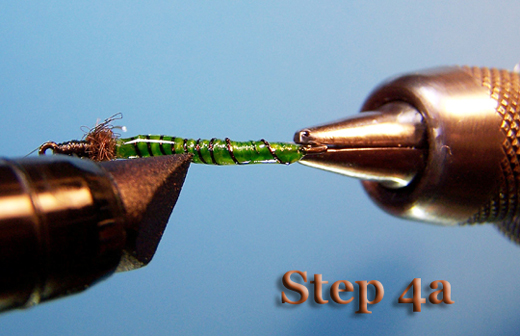 Step 4a. Color the back of the coated larva body using the darker green marker.
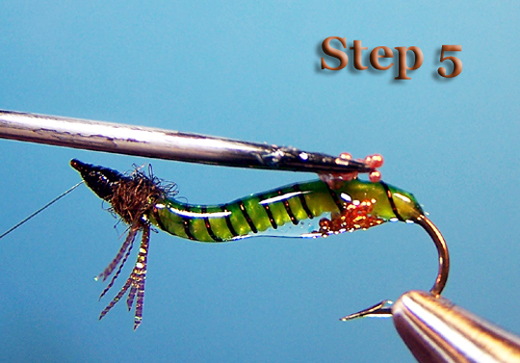 Step Five (5). Apply a thin coating of UV Knot sense to only the aft portion of the caddis larva body. Imbed the Micro Beads into this coating with the aide of tweezers, or a bodkin. Rotate the vice and populate the entire casing with micro beads. Take your time.
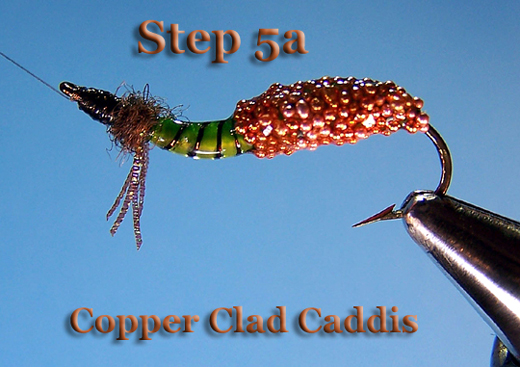 Step 5a. Once enough mico beads are affixed to the body, apply an additional drop of UV Knot Sense to the casing area. This liquid will make it easier to adjust the shape of the casing. Now make sure that the casing is shaped to allow for a sufficient hook gap. Once you have the casing shaped as desired, quickly fix the liquid with your UV light source. Trim Thread at Head. Step 5b. Apply a light coating of Sally Hanson's Hard As Nails over the beaded casing to impart a high luster and added durability.
About Richard:
|
|
|
|
|
